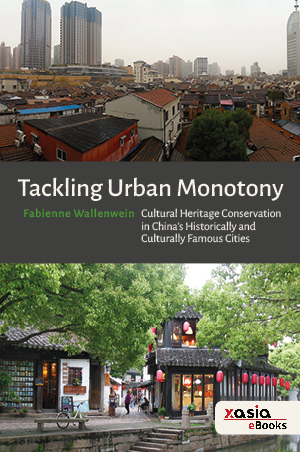Wallenwein, Fabienne
Tackling Urban Monotony: Cultural Heritage Conservation in China’s Historically and Culturally Famous Cities
With the threat and emergence of monotonous cityscapes in a rapidly urbanizing China, the pressure to preserve local characteristics has taken centre stage. Central and local governments at the beginning of the 1980s responded by prioritizing 24 cities with historical value and cultural relics. Drawing on international standards and experiences of early Chinese architects such as Liang Sicheng, the concept of “Historically and Culturally Famous Cities” begins to take shape. The study delineates three revitalized residential areas in the Jiangnan region, two of them characterized by splendid private gardens, Ming and Qing period mansions of historical figures, ceremonial archways, historic wells and trees. Strictly adhering to international conservation guidelines, the development of the Pingjiang Historic and Cultural Block in Suzhou came about in the conservation of its central road. As a pilot site for UNESCO’s Historic Urban Landscape management approach, Tongli Ancient Water Town explores its own ‘Tongli model’ for an integration of its residential and scenic areas. Contrastingly, the transformation of factory buildings and lilong architecture into a creative crucible in Tianzifang, Shanghai, is remarkable for its bottom-up approach. Based on these three areas which now serve as exemplars for integrated conservation and development, the study argues and demonstrates how “Historically and Culturally Famous Cities” developed from their initial concept into a multi-layered conservation system.








